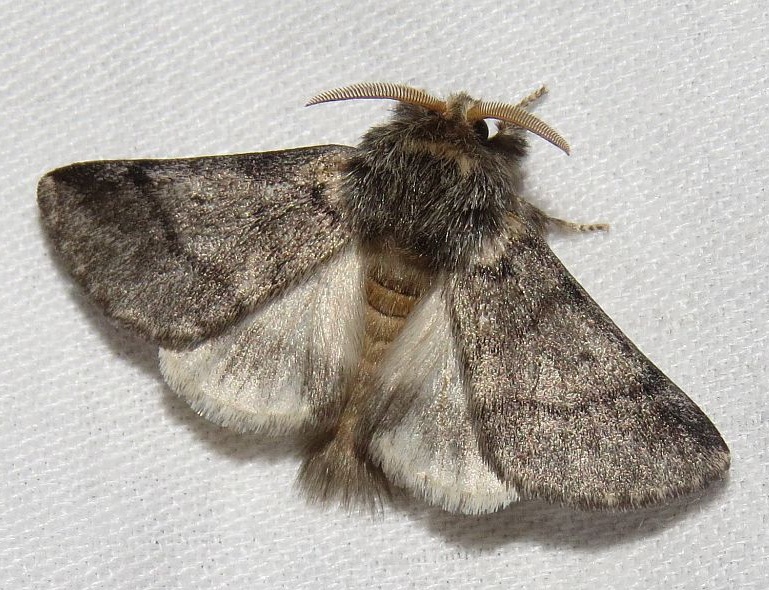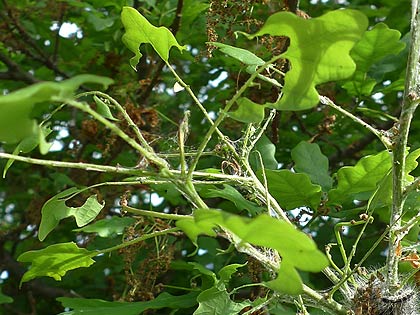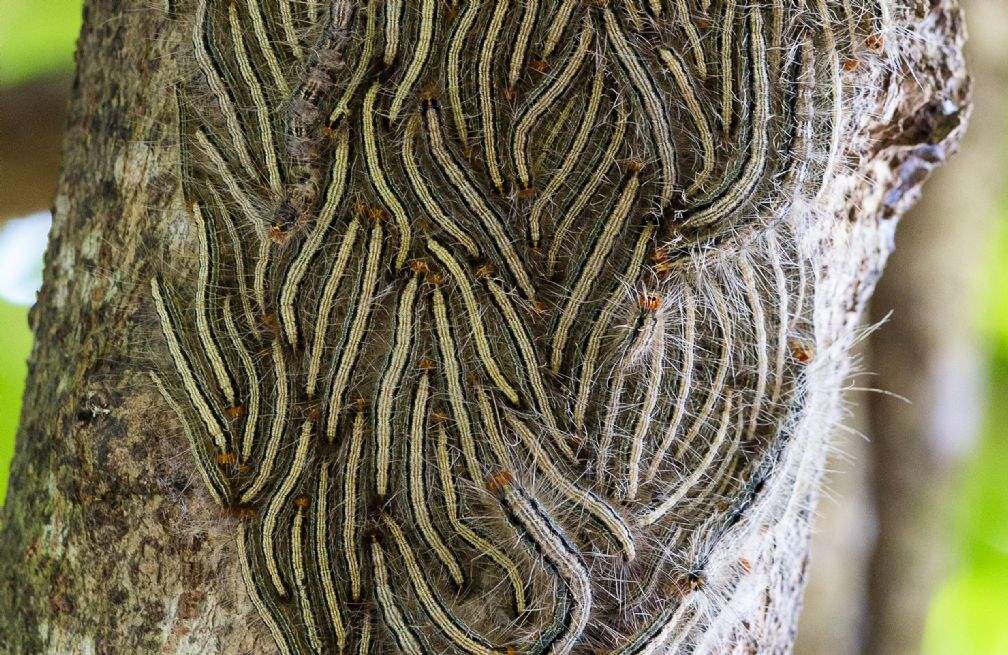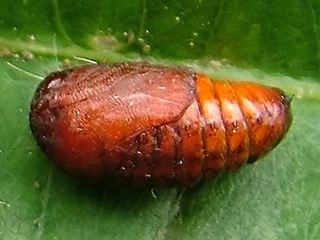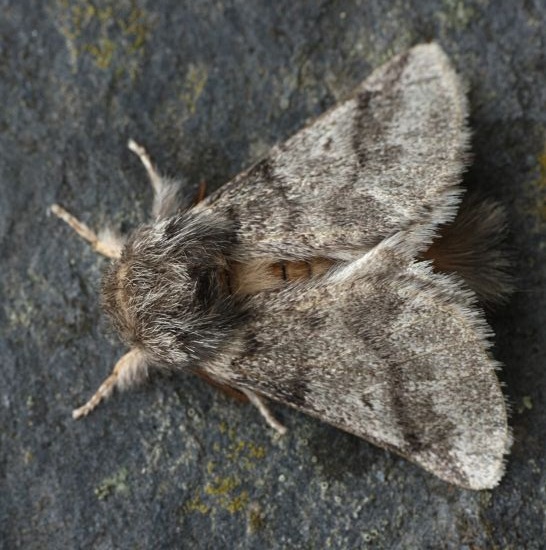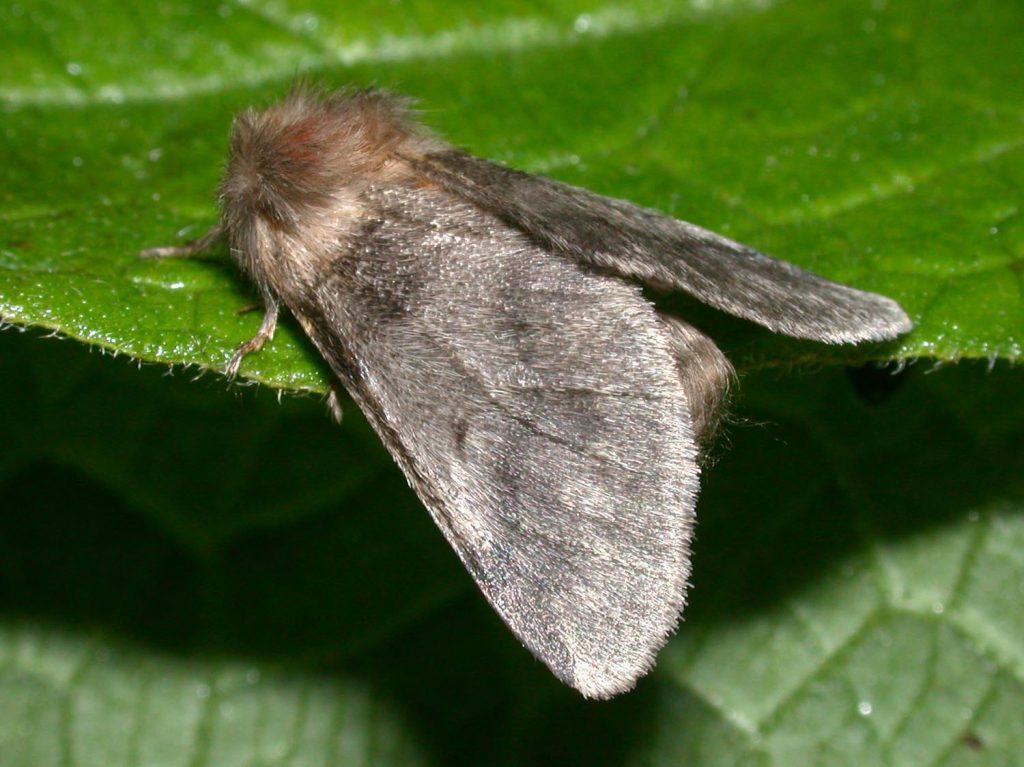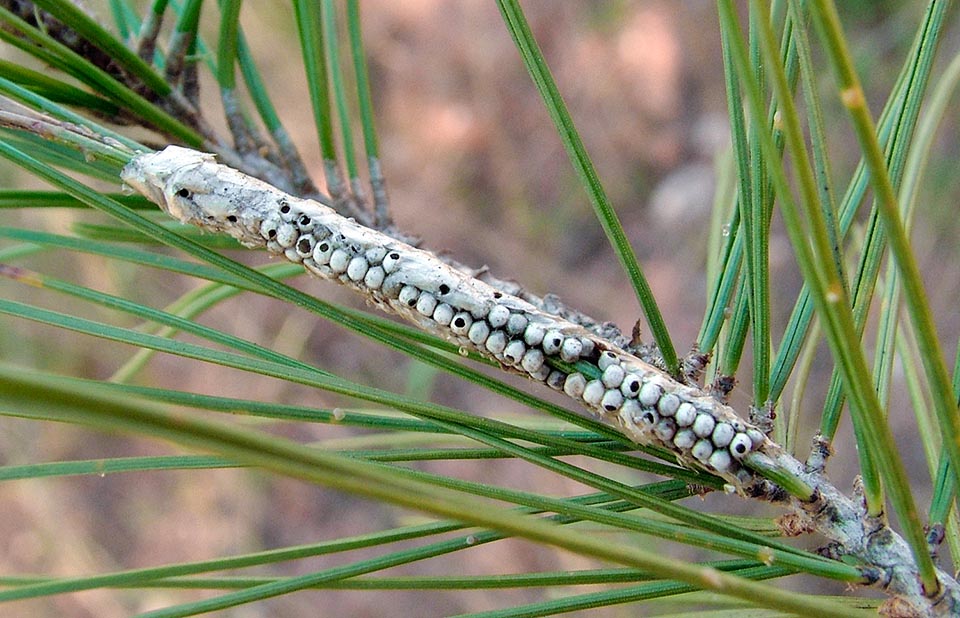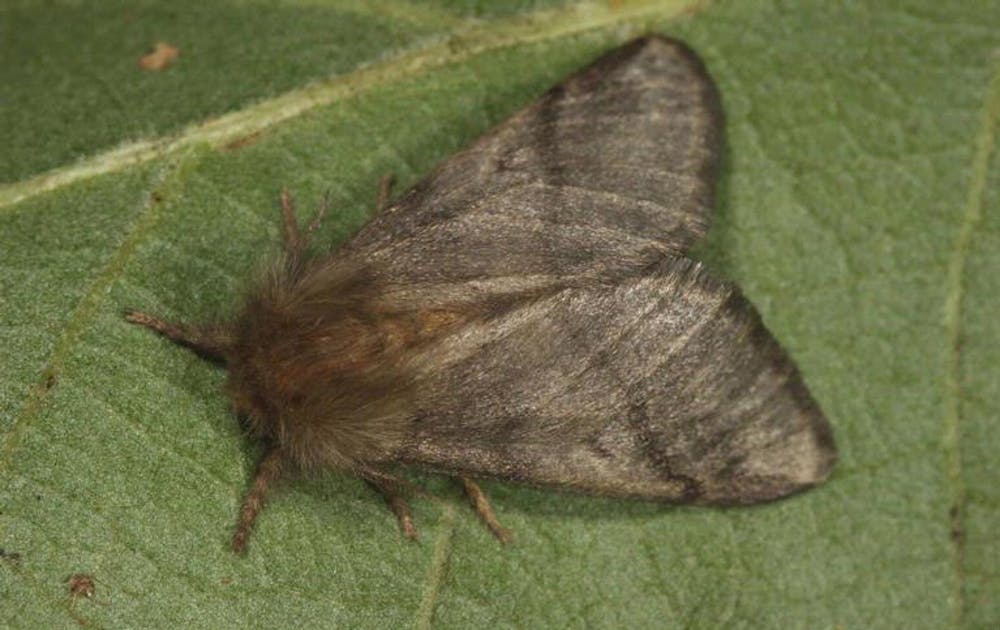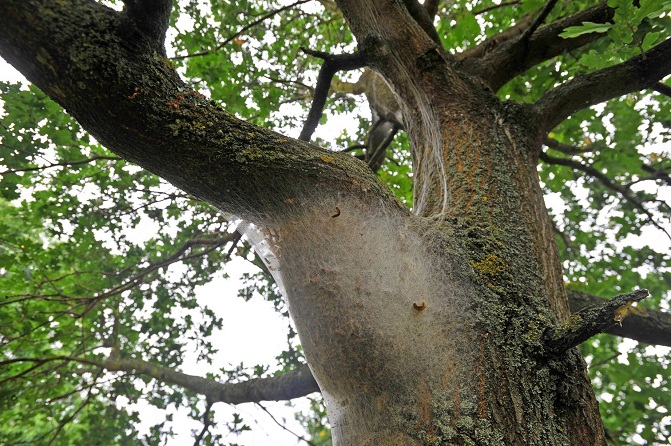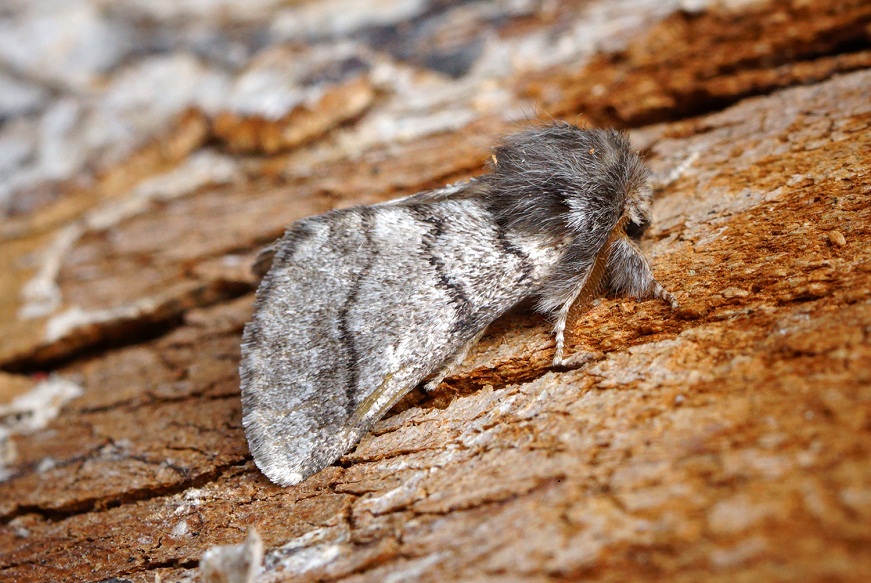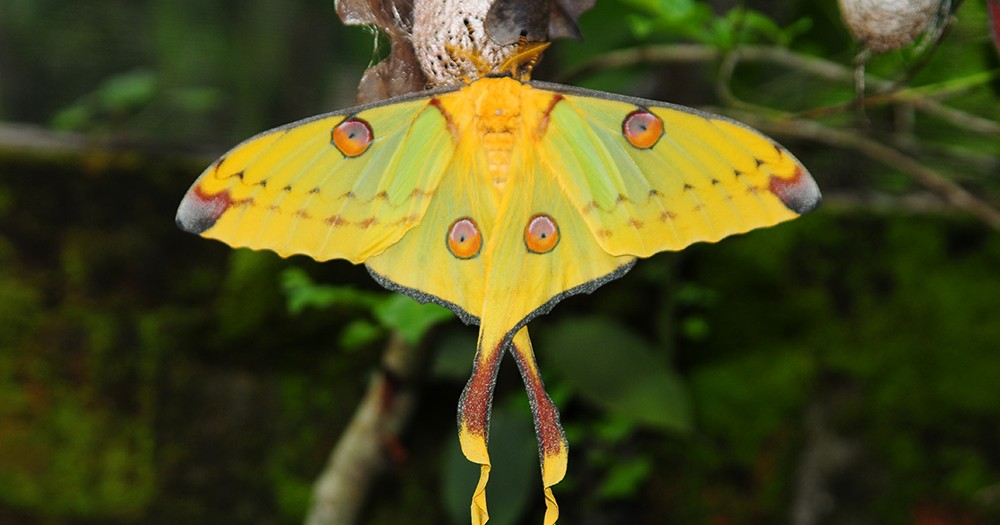Oak Processionary Moth (Thaumetopoea processionea)
Oak processionary of the Notodontidae family is indigenous to southern and central parts of Europe. Their name is a result of the combination of two factors. Firstly, their caterpillars inhabit oak forests feeding on the oak leaves there. Secondly, the larvae stay close to each other, moving in a nose-to-tail procession, hence the name oak processionary.
biolib.cz
Scientific Classification
- Family: Prominent Moth
- Genus: Thaumetopoea
- Scientific Name: Thaumetopoea processionea
Description and Identification
Caterpillar
The larvae are 2 to 3 cm long, having a dark brown body upon emergence, gradually turning gray with maturity. By the time these moths reach their third instar, they develop small urticating hairs throughout their body.
They mostly move in a procession towards the oak trees, feeding on the leaves, skeletonizing and damaging them completely.
The larvae make silken nests resembling a teardrop, blanket, or bag on the tree’s branches and trunks, leaving silk trails behind. Initially, the trails and nest appear white and prominently visible, later losing coloration and seen rarely.
Adult Moth
Sexual Dimorphism: Not prominent
Color and Appearance
Forewings: When opened, the forewings have a brownish-white appearance with markings of light brown. There is no change in the color and pattern when the wings are closed.
Hindwings: When opened, they are grayish-white with dark patches. When closed, the color and pattern remain the same.
The coloration of the hindwings differs in the moths from one region to another, being cream for those in the Middle East, and ash-gray for Western Europe inhabitants.
Average Wingspan: 3 cm
Flight Pattern: Not recorded
Season: End July – Mid September
Quick Facts
| Other Names | Oak moth |
| Distribution | Central Europe, Southern Europe, and parts of Northern Europe reaching up to Sweden |
| Habitat | Mostly in oak forests |
| Predators | Beetles, spiders, moths |
| Lifespan of Adults | 3 – 4 days |
| Host Plants | Oak (primary host plant), sweet chestnut, birch, hornbeam, beech, hazel |
| Adult Diet | Do not feed because of their short lifespan |
Did You Know
- At present, they occur as invasive species in many other parts of the world like Great Britain, where the eggs were found in an oak shipment reaching London’s Ealing and Richmond areas in 2006.
- Swedish botanist Carl Linnaeus described them first in 1758 in his book the 10th edition of Systema Naturae.
- The larva’s hairs cause skin irritation and even asthma to humans if the latter comes in contact with them.
Scientific Classification
- Family: Prominent Moth
- Genus: Thaumetopoea
- Scientific Name: Thaumetopoea processionea

